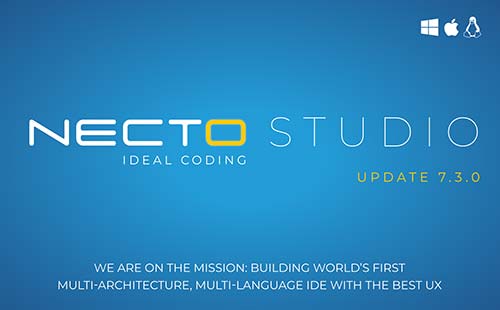MIKROE has announced that version 7.3.0 of its NECTO Studio IDE (Integrated Development Environment) now supports dual-core MCUs, allowing designers to program and debug each core independently while flashing merged firmware in the background.
This enables tasks to be run in parallel, increases power efficiency, and facilitates the creation of complex systems such as real-time control, user interfaces, and AI-based edge devices. Also new in the latest version, NECTO Studio’s Productivity Hub combines powerful AI and automation tools to save time and increase productivity. The Visual Prompt Generator speeds code generation, and custom hardware configurations can be easily managed, reused, and shared using the integrated Custom Board Tool.
Comments
Nebojsa Matic, CEO of MIKROE: “Our goal is to deliver the world’s first multi-architecture, multi-language IDE with the best user experience. We are excited to add dual-core support and provide easy, integrated access to AI tools from within NECTO Studio IDE.”
Dual-core support within NECTO Studio v7.3.0 brings: independent Start / Stop / Pause / Restart / Step Over / Step In / Step Out for each core; core-specific disassembly view; run to breakpoints; simultaneous flashing with automatic HEX merging; and Integrated project explorer support for dual-core projects. STM32 dual-core MCUs are currently supported – this will shortly be extended to other vendors and architectures including NXP, Renesas and more in future updates.
Productivity Hub
The Productivity Hub, included in NECTO Studio for the first time, enables embedded developers to build advanced embedded applications with multiple Click boards in minutes, guided by a simple and intuitive three-step wizard. First, NECTO automatically detects and preselects the setup from an active project. Second, quickly browse and select from over 1800 Click boards™ using the searchable list which can be filtered by category, function, or communication protocol. Third, if required, select a display. Upon completion of the wizard process, NECTO Studio automatically creates a tailored AI prompt for the NECTO Studio AI Code Assistant, which generates working code based on the selections made. Simply copy, paste, build, and run.
A redesigned Custom Board Tool is also fully integrated into the Productivity Hub, providing an easier and more effective way to manage custom hardware configurations.IT enables designers to visually assign mikroBUS™ pin connections, use a custom board in any local project, and to share or publish a custom board for team-collaboration and reuse.



